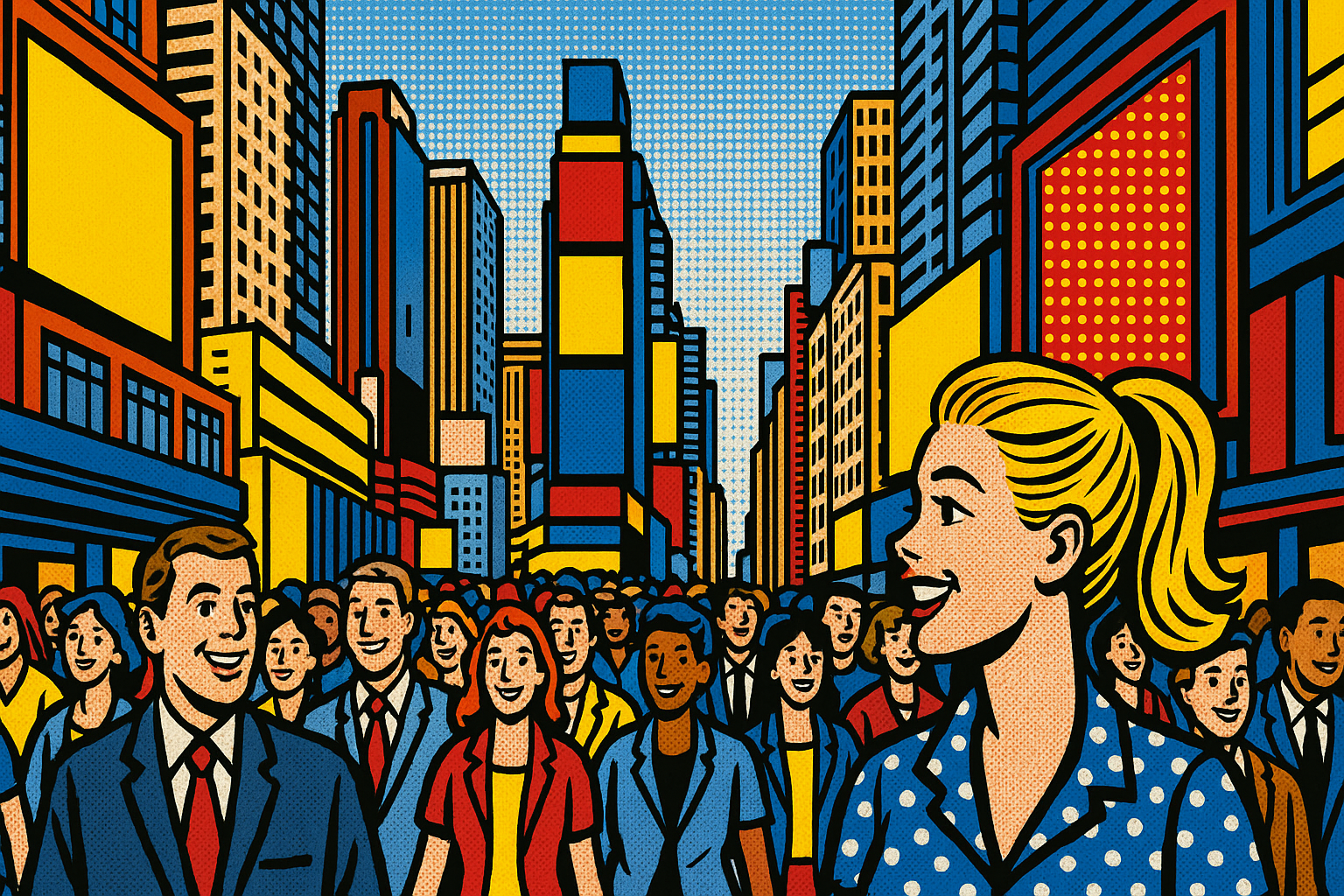From Subway to Skyline: Leveraging 54 Million Annual Riders at the 42nd Street Hub
Absehlute Media - 4 Minute Read
The Times Square 42 St/Port Authority subway complex has long been a central artery of New York City. Since 2022, it has experienced a robust rebound, restoring its pre-pandemic prominence. This article examines the factors contributing to its current annual ridership of approximately 54 million, the movement patterns of passengers from platform to pavement, and the implications for brands and urban life above ground.
Factor 1) A Network Within the Network
Times Square is not a single station but a convergence of multiple lines: the 1/2/3 on Seventh Avenue, the N/Q/R/W and 7 on Broadway, the A/C/E under Eighth Avenue, and the Shuttle (S) connecting to Grand Central. This intricate network forms the largest continuous concourse in the system, featuring numerous entrances, elevators, escalators, and street stairways.
According to the Metropolitan Transportation Authority (MTA), the Times Square–42nd Street station recorded approximately 54.3 million paid entries in 2023, marking it as one of the busiest stations in the system.
For advertisers, this isn’t just volume - it’s velocity. Millions funnel through a defined corridor, creating natural compression points ideal for high-frequency visual messaging.
Factor 2) From Turnstile to Street in Thirty Seconds
Despite the station's extensive underground layout, the majority of passengers emerge at key points such as the Broadway stairs on 42nd Street and the north mezzanine at 43rd Street. These exits lead directly to the Bowtie pedestrian plaza, where prominent LED displays at 1500 Broadway and One Times Square capture immediate attention - media landmarks as familiar as the skyline itself.
The transition time from platform to pavement is short, about 30 seconds - but critical. It's a moment of recalibration and orientation, when the mind is most susceptible to visual input. In advertising terms: the perfect window for high-impact storytelling.
Factor 3) Who Are Today's 54 Million?
The composition of Times Square's visitors has evolved. While precise current data on commuter versus tourist ratios is limited, the area continues to attract a significant number of leisure travelers, including domestic weekenders, Broadway audiences, and international visitors. This shift has implications for street-level engagement and spending patterns.
For brands, this matters. These aren’t passive transients—they’re curious lingerers with phones out, time to spare, and spending intent. From ticket queues to retail stops, their behavior is shaped as much by experience as destination.
Factor 4) The Pedestrian Layer Above the Tracks
Pedestrian traffic in Times Square has seen a substantial resurgence. The Times Square Alliance reports that the area regularly sees between 250,000 and 300,000 pedestrians daily, with peaks reaching up to 400,000 on the busiest days.
These patterns are influenced by various factors, including lunchtime gatherings of remote or hybrid workers and evening crowds attending Broadway shows. For campaign planners, this redefines “prime time.” It's not just 9-to-5, it’s noon meetups, dinner rushes, and curtain calls. Every crowd pulse is a targeting opportunity.
Factor 5) The Architecture of Attention
Times Square’s design channels both pedestrian movement and visual focus. The urban canyon effect created by the surrounding skyscrapers directs attention to specific LED screens, allowing for impactful advertising opportunities. This environment favors clear, high-contrast visuals that can capture and hold the gaze of passersby amid the sensory-rich setting.
In a space where visual saturation is a given, only simplicity breaks through. Advertisers who lean into bold contrast, slow motion, and confident minimalism don’t just get noticed, they dominate.
Factor 6) Advertising Opportunities in Times Square
Times Square offers a plethora of advertising platforms, from traditional billboards to cutting-edge digital displays. A notable opportunity is:
1500 Broadway Bowtie Spectacular: Positioned above one of Times Square’s main pedestrian plaza, this full-motion dual-sided screen targets a mix of travelers, consumers and business professionals.
Platforms like this offer brands unparalleled visibility, capturing the attention of both pedestrians and global audiences through live broadcasts and social media shares.
Looking Ahead
The MTA projects that system-wide subway ridership will return to 87% of 2019 levels by late 2025. Given Times Square's current performance, it is poised to meet or exceed this benchmark. This trend not only signals Midtown's economic vitality but also reinforces the area's status as a prime location for pedestrian engagement and brand visibility.
Times Square continues to serve as a dynamic launchpad, from subway to sidewalk, and from sidewalk to skyline. Understanding the flow and behavior of its millions of annual visitors is essential for anyone aiming to make an impact in this iconic segment of Manhattan.




